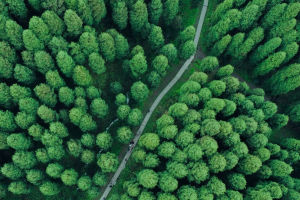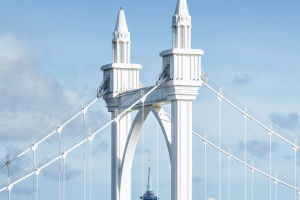Night scenes are a favorite subject for many photographers, with their brilliant lights, bustling streets, intoxicating nightlife, and dazzling fireworks.
Due to the widespread presence of artificial light sources in cities, it is an excellent subject from any perspective, allowing for the creation of captivating works.
However, capturing urban nightscapes is often considered challenging for many, as issues such as misfocus, overexposure, reddish night skies, dull colors, coarse noise, and blurry details can be difficult to control. To capture stunning urban nightscapes, there are techniques and experiences worth considering.
The most crucial factor influencing urban night photography is the shooting time. The optimal time to capture cityscapes is when the sky is not completely dark yet, rather than after it has become completely dark.
Night photography doesn't necessarily have to take place at night. During the early stages of dusk when city lights begin to shine, utilizing the ambient light in the sky, along with long exposure and a small aperture, capturing from an elevated position can result in expansive scenes with clear backgrounds and vibrant city lights.
However, this is precisely where many people make a major mistake when shooting urban nightscapes. If you search for cityscapes captured by professional photographers online, you'll find that almost none of them were taken in completely dark conditions. Why is that?
Urban night scenes differ from traditional outdoor night scenes due to the abundance of artificial light sources on the ground, such as building lights, car lights, street lights, and advertising signs. These light sources pose a challenging problem for photographers—high contrast differences and difficulties in exposure balance.
If shooting after complete darkness falls, the camera's metering system may be misled into thinking that increasing exposure is necessary for accurate reproduction. This can result in overexposed lights, a bright and blurry sky, and pitch-black building surfaces.
However, choosing to shoot when the sky is not completely dark yet allows for a balance between the remaining twilight brightness in the sky and the relatively low brightness of the city lights on the ground. During this time, whether metering for the sky or the ground, for lights or buildings, or using average metering or spot metering, the resulting images are less likely to exhibit obvious overexposure or underexposure.
This allows for even and detailed exposure, presenting a rich hierarchy of details in the sky, lights, ground, and building facades.
Capturing city lights against a completely black night sky can result in a monotonous and dull contrast. Presenting a beautiful dark blue sky when it's not entirely dark yet, with the warm yellow hues of the city lights just beginning to shine, creates a harmonious yet contrasting color tone, making the scene tranquil.
If the sky still retains the afterglow of the setting sun or beautiful fiery clouds, creating a visual harmony with the colors of the city lights on the ground, the overall image becomes more aesthetically pleasing and delightful to the eyes.


